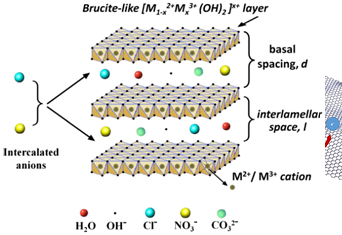
Maria Richetta
University of Rome “Tor Vergataâ€, Italy
Title: Nanostructure Layered Double Hydroxides (LDH): synthesis, characterization and possible applications
Biography
Biography: Maria Richetta
Abstract
Layered double hydroxides (LDHs) are ionic lamellar materials belonging to the group of anionic clays. The structure of LDHs is based on brucite-like layers containing a divalent M2+ cation coordinated with six OH- hydroxyl groups. The substitution of the M2+ metal, with a trivalent M3+ cation, gives rise to the infinite repetition of positively charged sheets (lamellas) alternating with An-ions. The layered structure has attracted increasing interest, because it can host complex organic molecules, intercalated in the interlamellar space. Engineered LDHS can find a wide variety of applications. For instance, they have been investigated as additives in anticorrosion coatings, in flame-retardants, for water treatment and purification, or for biomedical applications like drug delivery and biosensors. Several techniques can prepare LDHs crystallites as: simple one-step hydrothermal process at room temperature;co-precipitation; ion exchange; memory effect reconstruction. To characterize those materials various methods can be applied: from X-ray diffraction to X-ray Photoemission Spectroscopy and Auger Electron Spectroscopy. In the present work we will describe the LDHs samples, obtained in our laboratories, varying the growth parameters, with different substrates and on different layers. We will describe the growth of the structure either on biosensors or on circuit, and the intercalation into the nanostructure of biological molecules. The possible correlated applications as gas sensors, drug delivery systems, nanostructured-modified textile, etc. were also been shown



